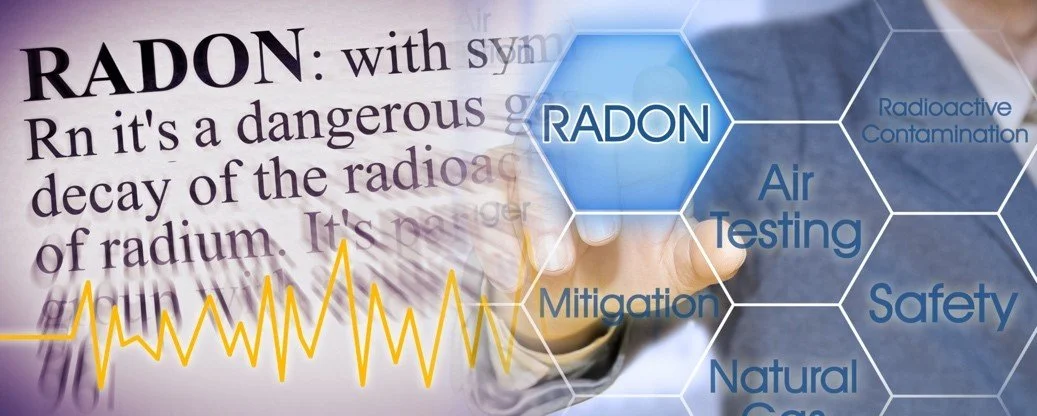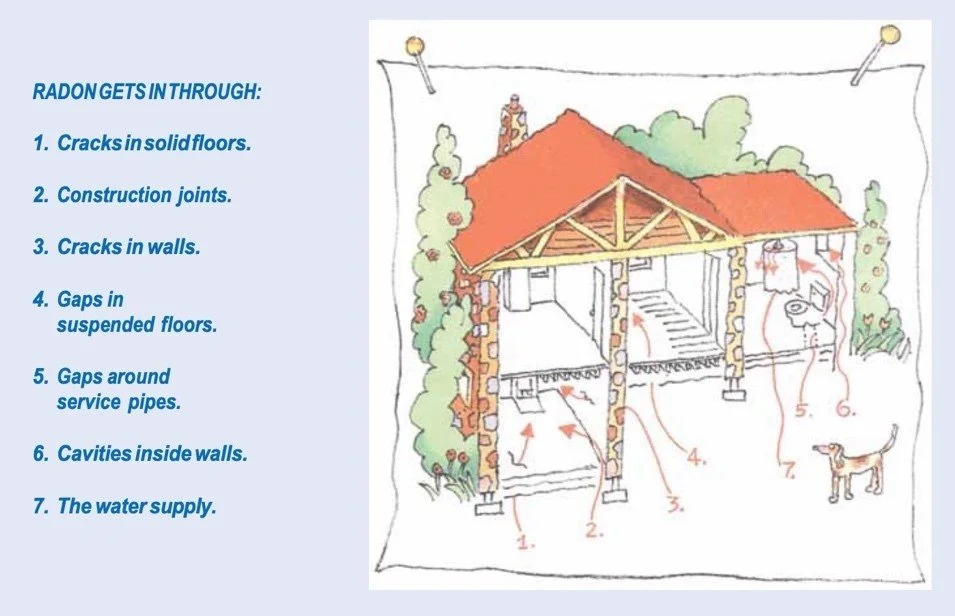What is radon gas?
To keep it as simple as possible, radon (aka radon gas) is a naturally occurring radioactive noble gas produced by the slow decay of radium in the soils under and around your home. Radon gas is colorless, tasteless, and has no smell, and the only way to know if you have radon gas in your home is to test for it.
Radon gas is considered a carcinogen by the World Health Organization (WHO). The United States EPA considers exposure to radon gas a health risk and has classified it as the number-one cause of lung cancer in nonsmokers. Smokers who are exposed to radon gas have a much greater risk of developing lung cancer. You can refer to the EPA’s “A Citizens Guide to Radon” for more information.
Where does radon gas come from?
Uranium, an unstable radioactive element, is found in soils across most of North America. As uranium slowly decays, it eventually becomes radium, which in turn, as it decays, transforms into radon. As a gas, radon naturally wants to rise to the surface and does so by following gaps and cracks in the soil.
EPA
The EPA has developed a map representing the general radon zones across the United States and how radon gas levels can fluctuate across our country. If you really want to dig into the uranium decay chain and how it eventually becomes radon gas, follow this excellent link.
How does radon gas get into my home?
Because the soils under and around the homes in this area can contain traces of uranium and radium, it’s unavoidable that radon gas will also be present, entering homes through gaps and cracks in basement foundations and floor slabs. The higher the concentration and/or the types of soils under your home, the greater the risk that there will be higher levels of radon gas within the home.
Older Homes
Older homes were draftier, and their basements were less apt to be used as living spaces in the earlier years of the last century. Newer, modern homes are built to be more energy efficient and resistant to air leakage, which can allow harmful levels of radon gas to accumulate.
The photo below is from the EPA‘s “A Citizens Guide to Radon”.
How do I know what the radon gas levels are in my home?
By testing. Testing for radon gas is easy and relatively inexpensive as a first step in determining if you have elevated radon gas levels in your home. Testing consists of placing a radon measurement device in your home for a minimum of 48 hours. This testing is to be done in what is called “closed conditions,” meaning all windows and doors are closed 12 hours before and during the testing period. Normal in and out is permitted, but for the most part, let’s just keep the doors and windows closed during the testing and pretend it’s winter.
What if the radon gas levels are high in my home?
The EPA recommends installing a radon mitigation system in homes with radon levels of 4.0 pCi/L (picocuries per liter) or more. Radon mitigation systems vary depending on your home, foundation type, and the level of radon gas measurement. A radon mitigation company can design a system that will reduce the radon gas levels in your home, typically below 1.0 pCi/L. Just for reference, ambient radon gas levels are considered to be around 0.4 pCi/l.
In Summary
More than 50% of the homes in Olmsted and the surrounding counties have unsafe elevated levels of radon gas. Testing for radon gas is easy and is the first step in protecting your family. Once you know the radon gas levels in your home, you can decide on the next steps in mitigating the radon gas if the levels are high.
Visit our website to learn more or to schedule your radon testing in the Rochester, Owatonna, and Faribault, MN areas. You can contact us today at (507) 202-8942 or use our online “Schedule Now” feature to set up an appointment.


